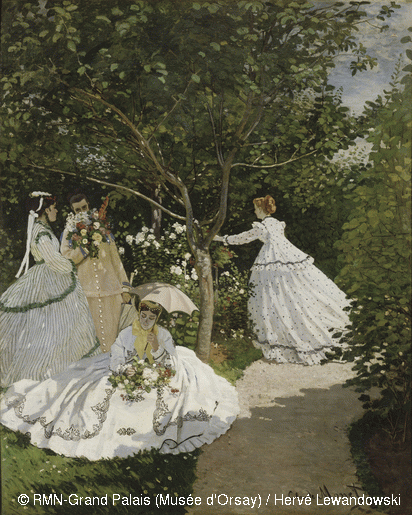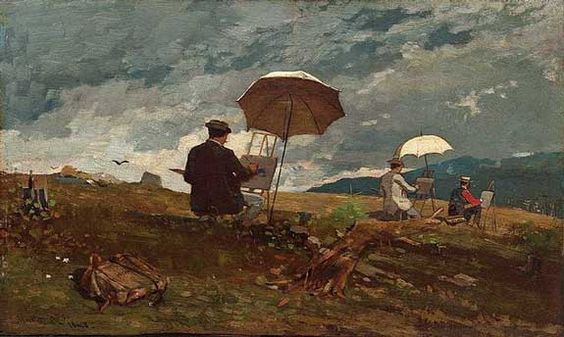When the weather improved (i.e. less humidity and heat) as hurricane Earl went north far off the Georgia coast, it was the first opportunity of the summer to go outside to paint. Bliss!
I had been looking at a scene out over the marshes and water, and felt it required a full sheet of watercolour, 30 x 22 inches. That is about the maximum size I can cope with outdoors as otherwise the board and paper become a sail as soon as it is windy. Since I sit and don't use an easel, I also find that my arm needs to "lengthen" to reach the top of the painting. There is another consideration too - because of the size, the painting tends to take much longer to do. This usually means returning to the same spot several times to catch the same light conditions on different days, always a gamble with our changeable weather.
Indeed, I am now into week two of trying to complete the painting, which makes me listen carefully to weather forecasts. But as I was painting, I remembered back to the famous story about Claude Monet when he decided, in 1866, to execute a large canvas outdoors in preparation for the juried Salon. He was in a rented house in Ville D'Avray, a Parisian suburb, living with his model-mistress, Camille. Since he chose to paint this huge canvas, over 8 ft. high by nearly 7 ft wide (2.55 x2.05 metres), he dug a deep trench into which to lower the canvas so he could reach the top whilst remaining at the same vantage point. He also rigged up a pulley system to raise and lower the canvas. Monet was intent on depicting light and shade, air movement and the sense of outdoors, although the ostensible subject was the four women (modelled by Camille). Femmes au Jardin or Women in the Garden was a huge undertaking; apparently Monet was rigorous about being faithful to the light, even to the point that he refused to paint the leaves on the trees if the light was "wrong".
Claude Monet (1840-1926),Femmes au jardin, Vers 1866,Huile sur toile H. 255 ; L. 205 cm (Image courtesy of Musée d'Orsay, Paris)
His friend, the journalist/writer, Emile Zola, was witness to this herculean effort and remarked that Money had a "very exacting eye for contemporary life". The final irony of this whole effort was that Femmes au Jardin was refused by the Salon. However, in 1921, Monet had the satisfaction of seeing it acquired by the French Government for a goodly price (and it is now on view at the Muséed'Orsay). So much for his most ambitious plein air painting venture.
At least I am not into trenches and pulley for my latest painting! But I still need to get on and finish it before the scene changes completely with autumn coming.














